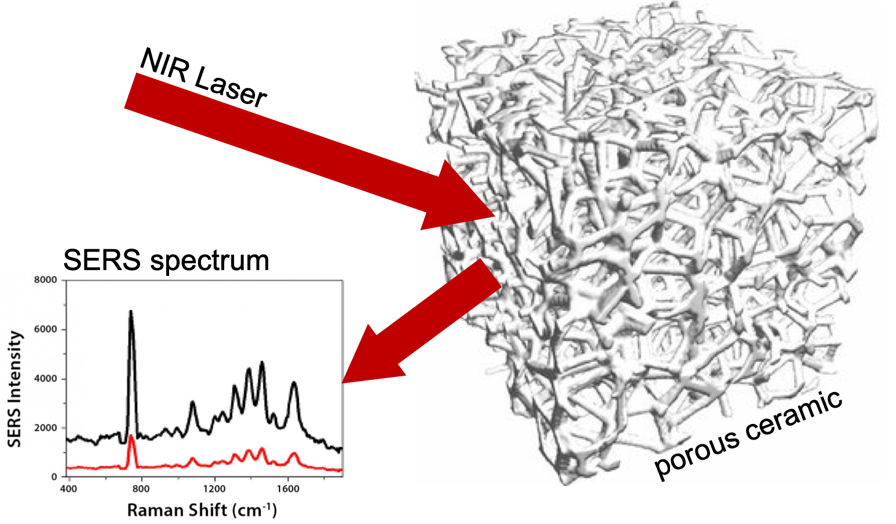Plasmonic porous ceramics
Plasmonic materials are currently developed for their advanced optical properties that enable highly sensitive, highly selective and rapid detection of molecules, for example via surface enhanced Raman spectroscopy (SERS). Most plasmonic materials, however, are based on 2D assemblies that function as on-chip devices, and as such cannot be easily integrated into 3D materials with complex structures. Porous materials would especially benefit from integrated plasmonic sensors which might enable, for example, monitoring of molecule concentrations or chemical reactions inside the pores. Here, plasmonic particles embedded within the matrix of the porous material could serve as antennas for near-infrared (NIR) light by enhancing the Raman signal of specific molecules. Therefore, the goal of this project is to design IR-transparent porous ceramics with embedded plasmonic particles that allow selective sensing of molecules inside the pore network via SERS or related methods. Refractory (temperature-stable) plasmonic materials are for example ZnO, TiN, TaC, ZrN or HfN, while yttria (Y2O3) is known to be highly IR-transparent and could serve as bulk phase of the ceramic. One major challenge of this approach is light scattering at the phase boundaries of the porous material. Even though light scattering is much more pronounced at smaller wavelengths, high surface area and small pores will define the limit of the penetration depth of the NIR or IR light that is used for SERS. Consequently, macroporous ceramics might be preferred, although micropores, especially embedded inside the pore walls of the macropores, might further enhance Raman amplification. Porous ceramics are often used as flow reactors, especially in high-temperature and/or high-pressure applications where on-line monitoring is especially difficult to achieve otherwise. Porous ceramics are also used as scaffolds for bone tissue engineering which would benefit from close examination of various biomarkers inside living tissues. Consequently, plasmonic porous ceramics could potentially serve as a powerful new tool for monitoring high-temperature flow reactions or gas adsorption in industrial applications or enzyme-catalyzed reactions and biomarkers in ceramic biomaterials.



